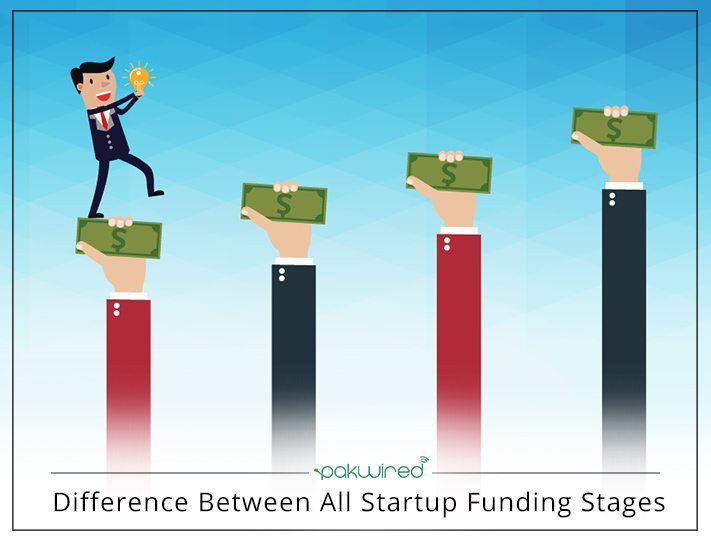For those who are new to the entrepreneurship world, the terminologies that are used at every startup funding stage might be daunting and confusing. However, it is very important to be well versed with the terms and the relevance of each funding stage as well. Each investment round is critical to the existence of the startup and comprehensive knowledge will give you an edge when negotiating as a startup founder or as a potential investor.
The primary difference between the funding stages is the type of funding, the maturity levels of the startup, how the capital is raised and the allocation of funds. The startup funding scene has experienced a significant revolution and continues to change rapidly. Presently, startups have a large venture capital pool to finance each round. With limitless capital sources, various methods are coming up to support the progressive funding stages adequately. Before each stage, valuations in terms of market size, proven track record, risk and overall management are thoroughly assessed to prove viability. This post aims to help you have full comprehension of each stage and the funding methods that are used.
1. Planting the Seed; Seed Capital
Experts in the industry equate this to the analogy of planting a seed for a plant or a tree. This is the stage where the idea for a startup is nurtured. With the analogy of the tree in mind, the end result is a mature tree that is bearing fruit after watering it and typically giving it the extent of care it needs. At this stage, your idea needs finances to determine its feasibility through extensive market orientation research that will determine what the product will be, your target consumers and team creation. Seed capital is required to support the initial steps of getting the startup off the ground.
This is usually determined as one of the risky stages in the process of startup funding as it is speculative. The key players in this stage include;
• Accelerators
Accelerators are organizations which provide support by offering office spaces to the startup team, providing mentorship opportunities and capital as well. They do this for an agreed percentage stake in the startup’s equity.
• Family and Friends
Many startup founders are naturally inclined to ask for capital from friends and family. A survey conducted by an independent company highlighted that a significant number of startups got their seed capital from friends, family, and anonymous well-wishers.
• Business Angels
These are people who have previously founded startups and have moved to investing in other startups. They can also investors who have pre-determined the feasibility of a startup on the basis of growth potential and the anticipated receptiveness of the market. They often invest from their own pockets and are integral to the survival of the startup.
2. Seed Capital
Seed Capital is the actual amount that is needed for the company to start. Over the years, the key players in this stage have increased to improve the effectiveness of this round of funding. At this stage, venture capital firms come in to increase the amount of funding. The other capital providers in this stage include super angels and business angels.
The seed capital stage has various types of funding including;
• Syndicate Investing
This allows the business angels to collaborate in the aim of financially supporting a common cause; the startup. Successful angel investors select other investors to provide funding in the consequent stages. This means that they are exempted from bearing the financial burden and funding is generated at a higher level.
• Crowdfunding
The first type of crowdfunding involves various authority sites that allow users to support and fund a project of their preference. Once a user funds a project, they receive a tangible or digital service or product as a reward. This is not usually preferred by startup founders as they are bound to incur expenses when covering the costs of the rewards.
Equity crowdfunding, on the other hand, allows the investors to get equity in return. This is done through a platform that is hosted by corporate brokers. The concept behind this is identifying startups and linking them with investors. Once a deal is closed, the platform gets paid by both parties for the services rendered. Equity translates to the investors gaining participation rights in terms of gaining access to the startup’s returns and being shareholders of the company.
3. Series A
At this stage, the company is showing signs of maturity. This funding is meant for optimizing the product and extending the user base by scaling it across diverse markets. The funding will also cover the development and execution of the startup’s business model to bring about long-term profits. The investors in this stage are mainly the conventional venture capital firms. Business angels may also come into play; however, they have little to no influence in this stage.
4. Series B
Series B stage funding is required to take the business to the next level. By this point, the startup has secured their targeted demographic and established a firm business model. At this stage, the investors- particularly the venture capitalists- have already projected the progressive success of the company and are already making calculations of how big their ‘cut’ will be. The business will also capitalize on talent acquisition during this period.
5. Series C
This stage is where the risks reduce and more players come in the scene. The company is up and running its operations- whether successful or not. The business has technically attained full maturity and continues to expand by acquiring other companies. The financing at this stage is at its peak and is a significant difference from the other funding stages.
Series C welcomes investment banks, hedge funds, and private equity firms as the leading investors as the venture capitalists merely participate. The stages that follow series C are inclined to result in an acquisition or n IPO.
The Final Word
To be able to evaluate and analyze the various entrepreneurial concepts, you need to be able to distinguish these funding stages. However, it is also important to note that there is no set limit to the number of funding stages that a startup can pursue.
Also Read: Search and Social Media Glossary


